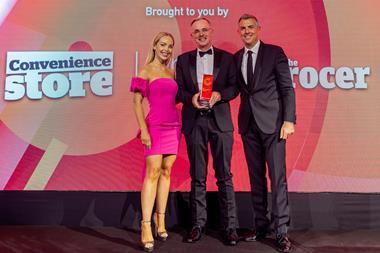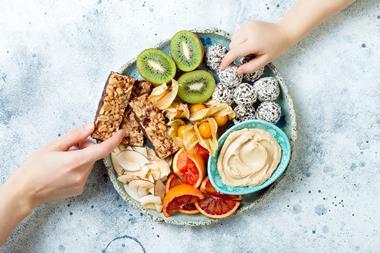Four C-Store champions explain how they keep their operations in shape, from managing cash flow to analysing the state of business
Shailesh Parekh, three forecourts in the West Midlands
To ensure that he is ahead of local competitors, Shailesh sends staff to check on rivals every few months.
Simon Biddle Biddles Simply Fresh, Redditch, Worcestershire
Simon sets high margins on his fresh produce and balances this out with low margins on strong promotions. that increased footfall.
Alpesh Patel Londis Finsbury Park, London
When he is in need of advice, Alpesh looks to the Londis symbol group to give him direction on where the market is headed.
Clive Sheppard Director of the Chartman Group chain of eight Spar forecourts and a c-store in Devon
Clive believes constant investment is vital and has three refits planned.
How is your business performing?
Shailesh: I’m in a good place at the moment.
Simon: We’re holding our own. Turnover has been stable since Christmas, which is especially pleasing considering that the weather hasn’t been great.
Alpesh: At the moment it’s 60/40. I say this because, for the most part, business is good since we refitted our store. However, we are having to work a lot harder now that we have the extended range and have to make sure that everything has the right price tag.
Clive: Business is going very well, especially when the sun shines and it brings in extra customers.
What are the key performance indicators (KPIs) you refer to in checking the health of your business?
Shailesh: First, you have to watch your customer count and the value of your average basket spend. Beyond that, you monitor the margins and your availability, and also make comparisons against your competitors.
Simon: We look at sales right across the different departments, from grocery and household, to chilled and fresh produce. I analyse our basket spend and profit margins as well.
Alpesh: We have a state-of-the-art system which tells us the best and worst sellers and the clutter that we don’t need. It also tells us the average basket spend.
Clive: We regularly look at sales, wastage, till shortages, percentage conversions to sales, average basket spend, basket spend in relation to fuel spend, and customer footfall.
How often do you check each of these KPIs?
Shailesh: Not as often as I’d like if the truth be told. I check the customer count every day on my epos system. I look at basket spend every week; in the last week of the month before people get paid there’s always a dip, and then it goes up again. In terms of keeping an eye on the competition, I send a few staff to snoop around rival stores every few months and they take photos on their smartphones for me.
Simon: I’ll look at them whenever I get a chance. I check my sales figures monthly.
Alpesh: Each category in the store is checked every six to eight weeks.
Clive: A lot of the KPIs are reviewed on a monthly basis, but with some areas we do weekly checks. Sometimes it’s a case of what your equipment will allow you to do, but the more regularly you can check these measures, the more control you have of the business.
To what degree do you share this information with your team?
Shailesh: I don’t have formal meetings, but I keep staff up to date on how the business is performing and where we need to improve.
Simon: The whole team works together on the figures. It’s general work chit-chat. I think it’s good to make all the team understand what’s going on so that everyone feels important and has an input.
Alpesh: We’re all part of the team so you have to share the information with everyone.
Clive: We have management accounts prepared and presented to the board at a monthly meeting. The information then cascades from operations directors to site managers, then to the rest of the store teams. Company data can be a useful motivational tool.
How far in advance do you forecast your business performance?
Shailesh: I do it for the whole year.
Simon: I don’t really do business forecasting. We set ourselves targets for every couple of months and we keep an eye on the weather and alter them if needs be.
Alpesh: I don’t think you can do it effectively in the independent sector. You just wake up and it’s a new day. I don’t think that it works in this day and age to try to make forecasts; it’s very difficult.
Clive: We generally work with a one-year plan with regard to sales and profits.
Have your business forecasts/expectations changed in recent years because of the recession and its impact on consumer spending?
Shailesh: I have had to reduce my projections in line with the current climate.
Simon: We don’t have business forecasts, but before we refurbished the shop in 2012 I knew that we had to go a different way because if we stood still we’d get swallowed up. We try to be keen on price because of the recession. For example, we’ll try to stick to the manufacturers’ pricing recommendations on cigarettes.
Alpesh: I don’t lower my expectations, but I’ve made sure I provide the right service, quality, products and ambience to suit my customers’ changing needs in the recession. It’s been tough to predict because you have no idea when a competitor is going to open up - it seems to be happening nonstop like popcorn kernels!
Clive: They have changed because the recession has affected spending habits, but we’ve invested in the business which has helped to cushion any dip in sales. We have three refits starting in the next three months with new Spar fascias and imagery. Investing has helped us to stay where we are. There’s a lot of activity in the sector, so if we don’t do things to keep customers interested, they will go elsewhere.
How do you manage your cash flow in this testing climate?
Shailesh: With some difficulty! I make a weekly plan - I know roughly what my sales will be and how much I will be paying out and I make sure I’m going to be alright. I don’t have a lump sum of savings anywhere. I prefer to invest my money as I go.
Simon: We always run close to the mark. We probably have £70,000-worth of stock and when you bear in mind that you pay the cash & carries in cash, it’s mainly tied up. When I do have money I invest it little and often into the business.
Alpesh: We’ve been in the business for 35 years so obviously we have a good management of our cash flow and we have our contingencies in place. We have two-and-a-half weeks-worth of stock - you have to have enough to operate the business if there’s a problem with the delivery.
Clive: In order to better manage cash flow, another KPI we look at is stock turn. We’ve been very focused on making it more efficient, especially because we are going to be investing in the sites. For tobacco, which is the most expensive category, we now have a two-week stockholding, whereas we were holding double that previously. We let things slide a bit, so now we’re getting back on track.
Who would you advise retailers to speak to when looking for guidance on keeping their business healthy?
Shailesh: I think you have to work these things out for yourself, although I sometimes refer to my trade association.
Simon: Obviously, if you need to discuss money then talk to the bank, but more generally speaking, it’s really good to talk to other retailers at events such as the National Convenience Show and Association of Convenience Store events.
Alpesh: Our regional sales manager and directors at Londis give us feedback on how the market is going. People have to be very careful to choose the right symbol as it’s critical to be with a group that meets your needs.
Clive: The big advantage we have is working with a good symbol operator in Spar Appleby Westward. It’s an individual thing as some retailers may prefer to work things through on their own, but we find that Spar has advised us in a very professional way.
How are you planning to maintain or grow your business over the coming months?
Shailesh: I’ll be working on sales and profit growth. Once I convert my Invention store to the Nisa symbol group then the product range will be vastly improved, especially when it comes to the fresh produce offering. I am more restricted in my Midland Link store because it measures only 90sq m (1,000sq ft), so I really have to optimise my space and work with what I’ve got.
Simon: I’ll be looking at different concepts to increase our sales. I’ve got part of the old kitchen at the back of the store that I’m looking to convert into a new area. Up until now we’ve been using it as a store room, but now I want to do something more with it - maybe turn it into a hot food-to-go area with pizzas and hot meals.
Alpesh: We need to go for sales growth rather than profit growth now that we’ve completed the refit. We’ve expanded the store from 480sq ft to 2,800sq ft so we now need to focus on fine-tuning the offer to what customers want.
Clive: I don’t think we’ll be looking to increase our margins - if anything, we’ll be offering keener pricing to drive sales. We’re also investing in our stores to ensure that we maintain high standards. Our flagship Winning Post store in Exeter has been refitted and is due to re-open in May.
What product margins do you work to?
Shailesh: You have to have a trade off between what makes money and what customers are happy to pay - you need to keep them coming back to your store. I’d love to sell cigarettes at £15, but people would stop shopping here. You have to be mindful of different people’s needs as well. I provide sandwiches for as little as £1 a pack, but also some at £3, because some people are food snobs and want to pay extra, whereas other people are on a tighter budget and looking at saving money where they can. The bulk of our customers are day-to-day shoppers - they don’t have £150 to spend in a supermarket, so we have to look after them.
Simon: I keep to a sensible margin. With fruit and veg and fresh flowers, you have 50% plus margins. If you can get these areas strong, then you can afford to offer a few great footfall driving deals with low margins, too.
Alpesh: As far as profit margins go, it depends on the category. With fresh produce and chilled you’re looking at 30% profit on return, whereas with some pricemarked tobacco it’s just 3%. But overall, I’d say it works out at about 21% on average.
Clive: We have target product margins with two different pricing categories depending on store locations. In areas where there is more competition from other stores we have lower margin aspirations, whereas in more rural areas, they are slightly higher.
















![C-Store_Champions_logo-CHOSEN[1] 2023](https://d2dyh47stel7w4.cloudfront.net/Pictures/380x253/6/5/7/301657_cstore_champions_logochosen12023_817064.jpg)




No comments yet